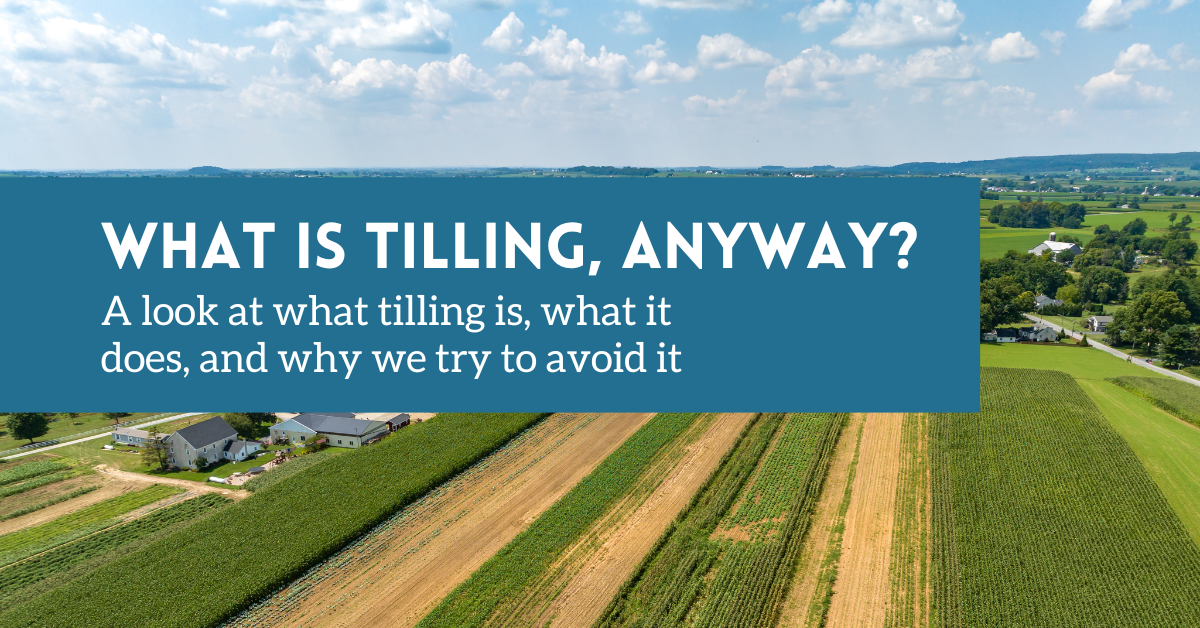Blog
What is Tilling, Anyway?
January 31, 2024

If you’ve visited Lancaster farmland, you’ve likely heard someone boast that much of Lancaster’s farmland is “no-till” land. Did you know 66% of Lancaster County’s farmers utilize no-till or minimum-till practices on their farms? But what exactly is tilling, and why do we try to avoid it?
According to Oregon State University, “tilling is the practice of aerating the soil to permit moisture and air to permeate, allowing seeds to germinate, encouraging root growth, controlling weed growth, and integrating fertilizers into the soil.” Farmers often till their fields with plows to prepare fields for seeding.
This sounds great, right? So, why do many consider tilling a bad practice?
Farmers have used tilling for centuries to prepare their soils, but intensive or reckless tilling will likely cause more problems in the long run. Long-term, frequent tilling causes two main issues: fractures in soil structure and reductions in crop residue.
Soil Fractures
Disruptions to soil structures accelerate soil runoff and erosion. Runoff not only causes damage to a farmer’s property but also to our watersheds.
Lancaster County plays a significant role in the health of the Chesapeake Bay watershed, which means that anything that flows into our streams and creeks will eventually flow into the Chesapeake Bay. Soil runoff picks up various pollutants that will eventually enter our water, causing problems for the Bay downstream!
Crop Residue Reductions
Raindrops pounding into the soil are cushioned by crop residue. Without crop residue, soil particles are dislodged when it rains. This seemingly minor issue quickly snowballs into a multitude of problems. According to Iowa State University, dislodged soil particles clog soil pores, which will, in turn, seal off the soil’s surface and result in poor water infiltration. Restricted water infiltration leads to poor root function in plants, greatly affecting their growth.
Tilling alternatives
Weed control is one of the main reasons why tilling is so popular. One of the most common ways Lancaster County farmers control weeds without tilling is through burndown herbicides. However, if a farm is organic and does not use herbicides, farmers use machines called “roller crimpers.” Roller crimpers turn cover crops into weed-suppressing mulch. While an excellent tilling alternative, this technique requires much skill and practice, so it is not as popular in the County.
We are proud to have productive farmland in Lancaster County. Helping to educate farmers on conservation efforts, like tilling alternatives, is only one way we are a resource for our County’s committed landowners. To learn more about our conservation efforts, click here to watch our recent conservation video. Check out the references below to discover more about tilling and other agricultural practices!
https://agsci.oregonstate.edu/mes/sustainable-onion-production/tillage-and-cultivation
https://www.nrcs.usda.gov/sites/default/files/2022-10/Infiltration.pdf
https://www.agriculture.com/crops/pesticides/what-farmers-need-to-know-about-burndown-herbicides